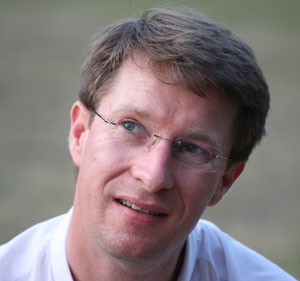Marie-Christine Angonin : Vice-presidente of the administrative committee

A graduate of the Ecole Normale Supérieure and a professor at the Pierre and Marie Curie University, Marie-Christine Angonin is a member of the SYRTE laboratory at the Paris Observatory. Her research covers the theoretical aspects of gravitational experiments and tests of relativity involving cold atoms such as FORCA-G, or in the context of the solar system (GAIA, lunar laser ranging).
For many years, she helped to mutualise the teaching efforts of the Paris Observatory, the partner universities and Paris Sciences et Lettres (PSL), at both the masters level and the multidisciplinary graduate level.
She is a member of the governing council of PSL and has joint responsibility for the second year Research Masters diploma in « Astronomy, Astrophysics and Space Engineering ».
Guy Perrin : vice-president of the science council

Astronomer, graduate of the Ecole Polytechnique, Guy Perrin is a specialist in interferometry and in the high resolution observation of evolved stars, active galactic nuclei and the galactic centre.
Guy Perrin has assumed many administrative responsibilities, incuding that of President of the Science Committee of INSU’s High Angular Resolution Initiative, and of the International Astronomical Union’s Commission 54 (Optical and Infra-red Interferometry).
To-day, Guy Perrin has the scientific responsiblity for the Gravity instrument project, which will soon equip the European Very Large Telescope in Chile, and will be used to explore the black hole at the centre of our galaxy.
